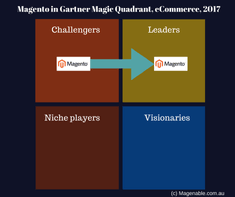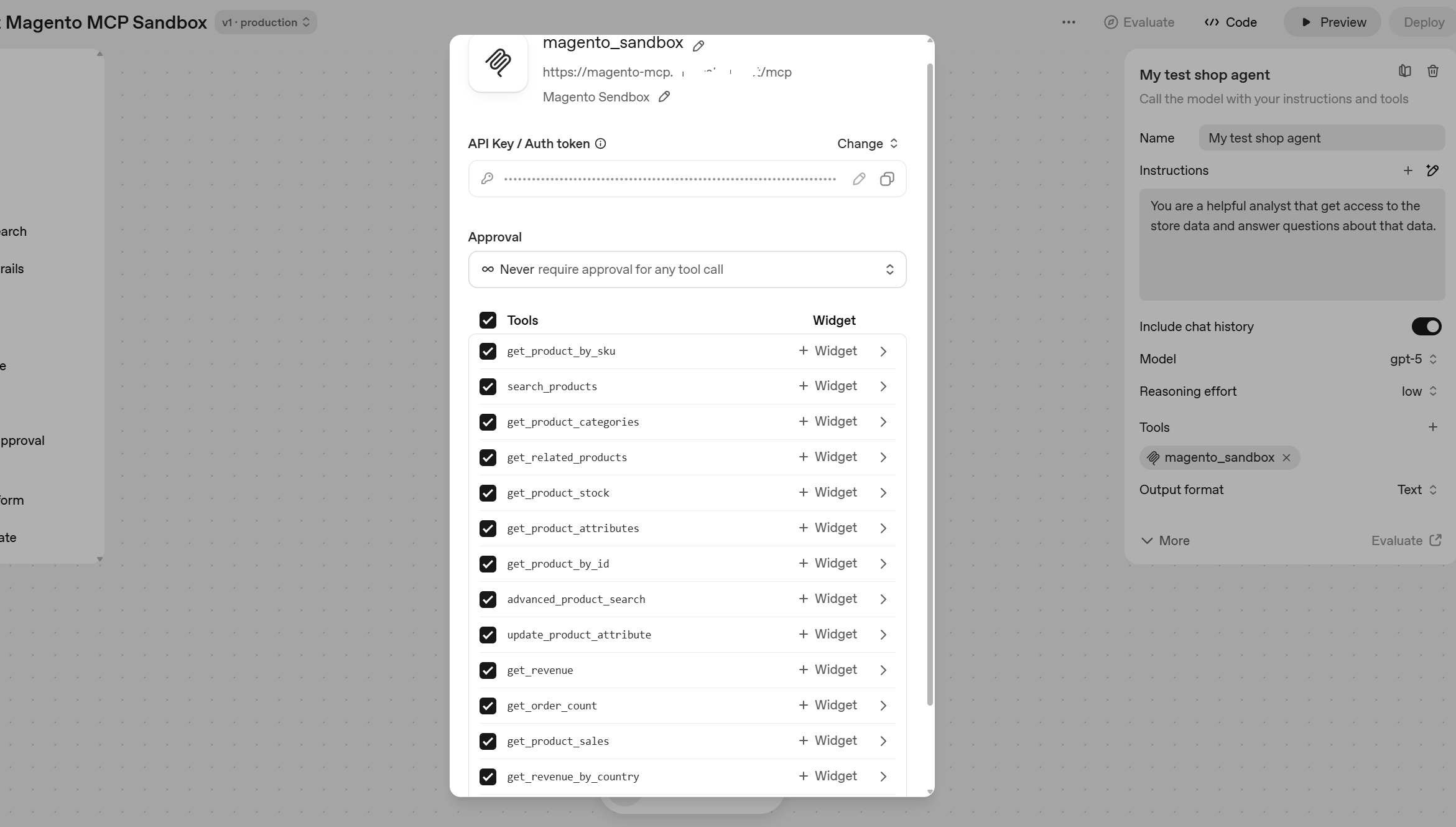Gartner Magic Quadrant for Digital Commerce is one of the most respected annual publication evaluating enterprise class eCommerce platforms.
This year Magento performed very well and moved to the best quadrant – Leaders (last year it was in Challengers).

Moving to the leaders
Leaders according Gartner are the vendors who combine complete and ambitions future vision with ability to execute.
In this quadrant Magento joined such enterprise platforms as IBM, SAP Hybris, Oracle, Salesforce (ex Demandware) and Digital River.
Such popular solutions as BigCommerce, Shopify and NetSuite were defined by Gartner as Niche players for various reasons – from the lack of functionality that bigger businesses expect to uncertainty related with acquisition. Another platform that often competes with Magento Enterprise, Intershop was placed to Visionaries quadrant.
What helped Magento Enterprise to move up in the Magic Quadrant report:
- Open-source core, providing ultimate level of flexibility
- Great value for money. While Magento Enterprise licence cost isn’t cheap for small business, in Enterprise world it provides very good value for money, comparing with other options
- Improved architecture and speed of development of Magento 2. This one probably the factor that moves Magento from Challengers to the Leaders. Both merchants and developers (including us) often complain about bugs in Magento 2, but it is undeniable that new functionality developed in house and through acquisitions (such as B2B Suite, Magento Business Intelligence, improved content editing) are important components for bigger businesses
Main area of caution noted by Gartner analyst is problems with transition from Magento 1.X to Magento 2.X. BTW, if you face this dilemma, you are welcome to check our opinion and if you are on Magento 1.X – don’t forget to sign-up to free whitepaper “Life after Magento 1.X” we are preparing.
In overall, Gartner has positive outlook of digital commerce platforms market – it expects annual growth of 15% from 2015 through 2020. Global spending on ecommerce platform is expected to reach $9.4 billion by 2020, in constant currency. Self-hosted deployment will still dominate in dollar terms and account for 53% of software revenue.
References





